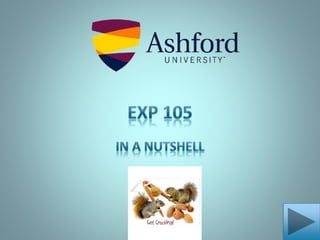Learning Connections-Presentation1
•Download as PPTX, PDF•
0 likes•6,029 views
This document discusses adult learning theory and provides an overview of a course on learning patterns. It defines learning and describes how modern theory views learning as based on feelings, thoughts, and actions experienced during the learning process. The course aims to help students identify their individual learning patterns, analyze learning processes, and apply intentional learning techniques. It introduces the FIT model for adjusting learning patterns to meet task demands by forging, intensifying, or tethering different patterns. The goals are for students to increase self-awareness, enhance quality of relationships, and improve communication skills to find success in meeting learning challenges.
Report
Share
Report
Share

Recommended
Recommended
More Related Content
What's hot
What's hot (20)
The 6 essential ingredients for successful learning transfer 

The 6 essential ingredients for successful learning transfer
Similar to Learning Connections-Presentation1
Similar to Learning Connections-Presentation1 (20)
Introduction to Employee Learning & Development Organization 

Introduction to Employee Learning & Development Organization
Become a leading learner. Connected learning: A Smart framework for educators

Become a leading learner. Connected learning: A Smart framework for educators
Recently uploaded
This slide is prepared for master's students (MIFB & MIBS) UUM. May it be useful to all.Chapter 3 - Islamic Banking Products and Services.pptx

Chapter 3 - Islamic Banking Products and Services.pptxMohd Adib Abd Muin, Senior Lecturer at Universiti Utara Malaysia
https://app.box.com/s/tkvuef7ygq0mecwlj72eucr4g9d3ljcs50 ĐỀ LUYỆN THI IOE LỚP 9 - NĂM HỌC 2022-2023 (CÓ LINK HÌNH, FILE AUDIO VÀ ĐÁ...

50 ĐỀ LUYỆN THI IOE LỚP 9 - NĂM HỌC 2022-2023 (CÓ LINK HÌNH, FILE AUDIO VÀ ĐÁ...Nguyen Thanh Tu Collection
Recently uploaded (20)
Chapter 3 - Islamic Banking Products and Services.pptx

Chapter 3 - Islamic Banking Products and Services.pptx
Students, digital devices and success - Andreas Schleicher - 27 May 2024..pptx

Students, digital devices and success - Andreas Schleicher - 27 May 2024..pptx
1.4 modern child centered education - mahatma gandhi-2.pptx

1.4 modern child centered education - mahatma gandhi-2.pptx
The Art Pastor's Guide to Sabbath | Steve Thomason

The Art Pastor's Guide to Sabbath | Steve Thomason
MARUTI SUZUKI- A Successful Joint Venture in India.pptx

MARUTI SUZUKI- A Successful Joint Venture in India.pptx
Salient features of Environment protection Act 1986.pptx

Salient features of Environment protection Act 1986.pptx
Sectors of the Indian Economy - Class 10 Study Notes pdf

Sectors of the Indian Economy - Class 10 Study Notes pdf
50 ĐỀ LUYỆN THI IOE LỚP 9 - NĂM HỌC 2022-2023 (CÓ LINK HÌNH, FILE AUDIO VÀ ĐÁ...

50 ĐỀ LUYỆN THI IOE LỚP 9 - NĂM HỌC 2022-2023 (CÓ LINK HÌNH, FILE AUDIO VÀ ĐÁ...
Welcome to TechSoup New Member Orientation and Q&A (May 2024).pdf

Welcome to TechSoup New Member Orientation and Q&A (May 2024).pdf
Overview on Edible Vaccine: Pros & Cons with Mechanism

Overview on Edible Vaccine: Pros & Cons with Mechanism
Jose-Rizal-and-Philippine-Nationalism-National-Symbol-2.pptx

Jose-Rizal-and-Philippine-Nationalism-National-Symbol-2.pptx
Learning Connections-Presentation1
- 2. • Learning is a lasting change in behavior that results from experience. • The act or process of acquiring knowledge or skill • Measurable and relatively permanent change in behavior through experience, instruction, or study.
- 4. Adult learning • We know that adult learning is process focused, and very different from the way children learn. Earlier theories on adult learning focused on traits, learning styles, and emotional development. You might have heard of “Learning Styles.”
- 5. Modern theory is a blend of developmental traits with that of “metacognition” resulting in a perspective of learning based on the feelings, thoughts, and actions experienced when we learn. These patterns, or “Learning Connections” is supply you unique access skills you can implement at will according to the task at hand. Calling upon and applying patterns requires a focused intention, another skill you will gain from this course.
- 6. • Describe and understand the concept of learning • Self Identify learning patterns. • Analyze learning processes and individual patterns of thought. • Analyze impact of learning process on critical thinking, reading and writing. • Identify learning processes required to successfully complete academic, personal, or professional tasks. • Apply intentional learning techniques in class activities. • Demonstrate application of FIT in learning contexts. • LCI online assessment • Text, multimedia, assessment instruments. • Discussion with peers and instructor. • Collaboration • Critical thinking, analysis and application of information. • Demonstration of understanding through effective communication via required technology that includes detailed examples (real world and class.) • Create a strategy card- a plan to succeed in the final assignment. • Meet instructor expectations and achieve learning outcomes.
- 7. Summary of F.I.T.- See Chapter 4.4 • FIT is the ability adjust learning patterns to meet learning expectations placed on you in various contexts. This is also known as “self regulation.” • “F” is to FORGE, or increase use or performance of a pattern you use rarely or avoid. • “I” is to INTENSIFY, or enhance a pattern you already use as needed. • “T” is to TETHER, or to suppress a pattern you use first or at too high a level. • FIT is an active process. • The goal is to match the amount of each pattern required of you (by the task or assignment) to the amount you actually use. You will learn to strategize to fit the task using a process of “decoding.”
- 8. What should you hope to achieve? Your GOALS • Increased self awareness. • Success in meeting learning challenges at home, work, and college. • Enhanced quality of relationships. • Development of technical proficiencies: navigating Ashford online classroom and available resources, personal computing (online research, word processing, troubleshooting.) • Improved verbal and written communication.
- 9. I hope you enjoy the course! Learning to respond appropriately to the world around you results in success in academic and work endeavors.
- 10. Good luck!!
